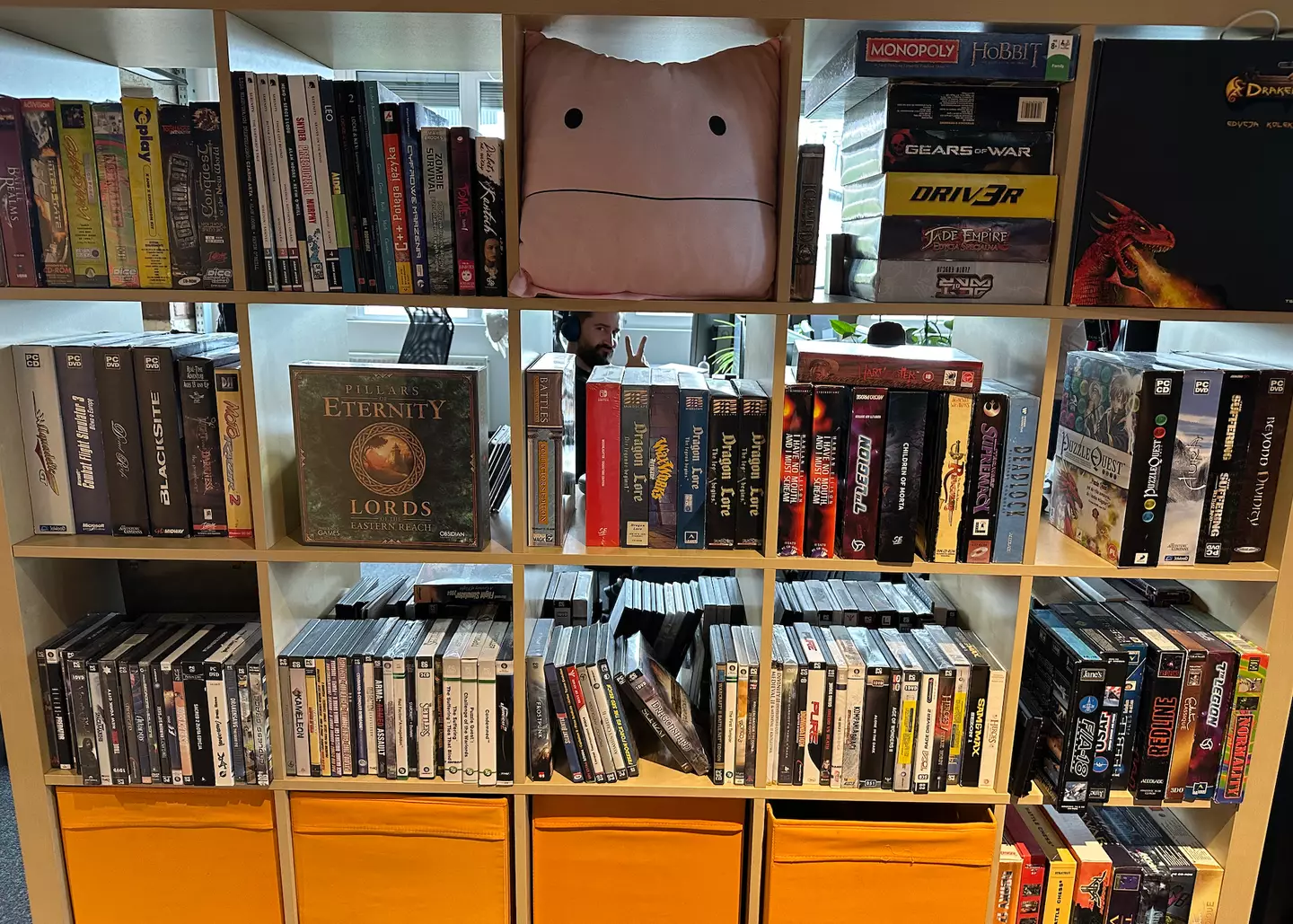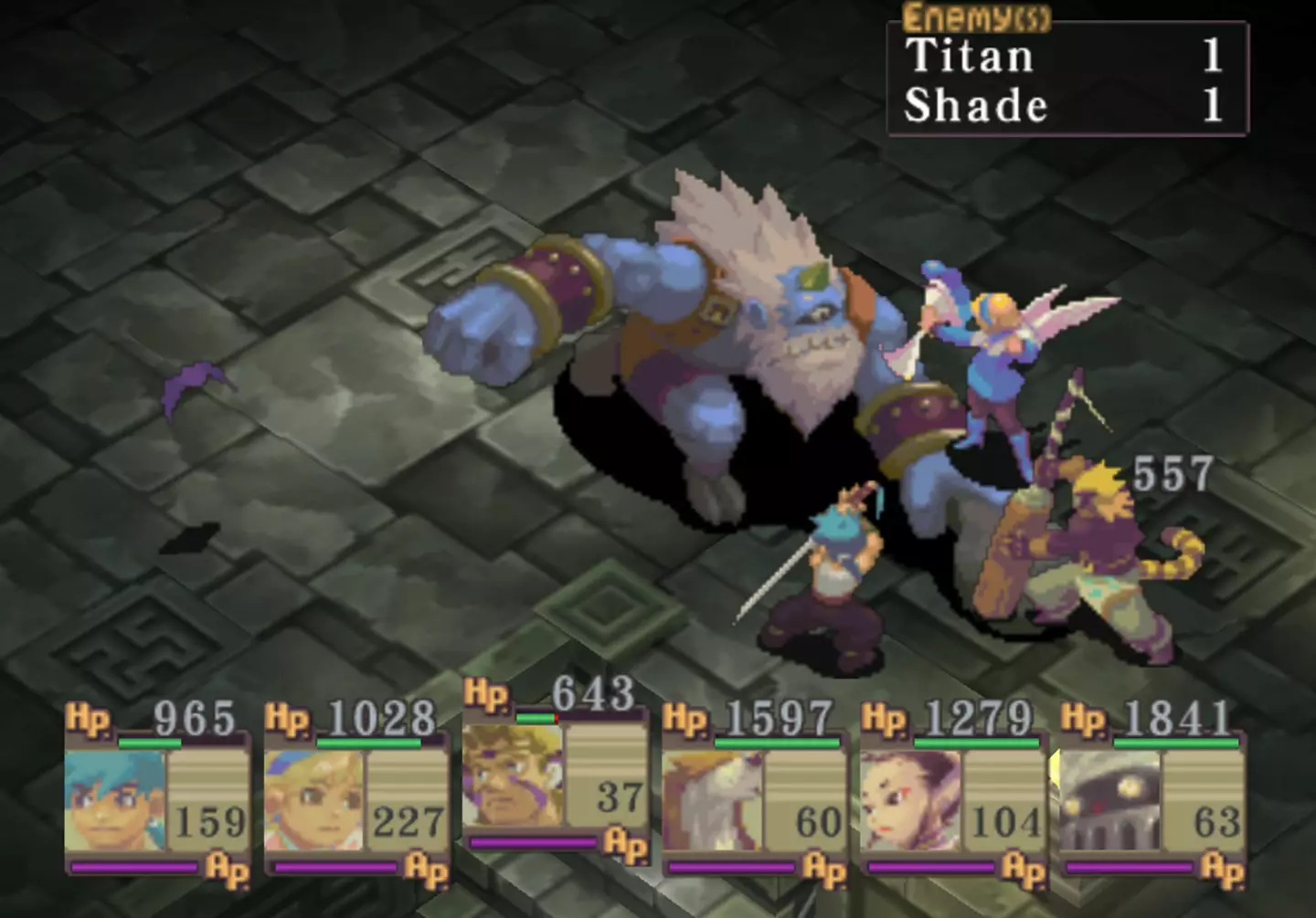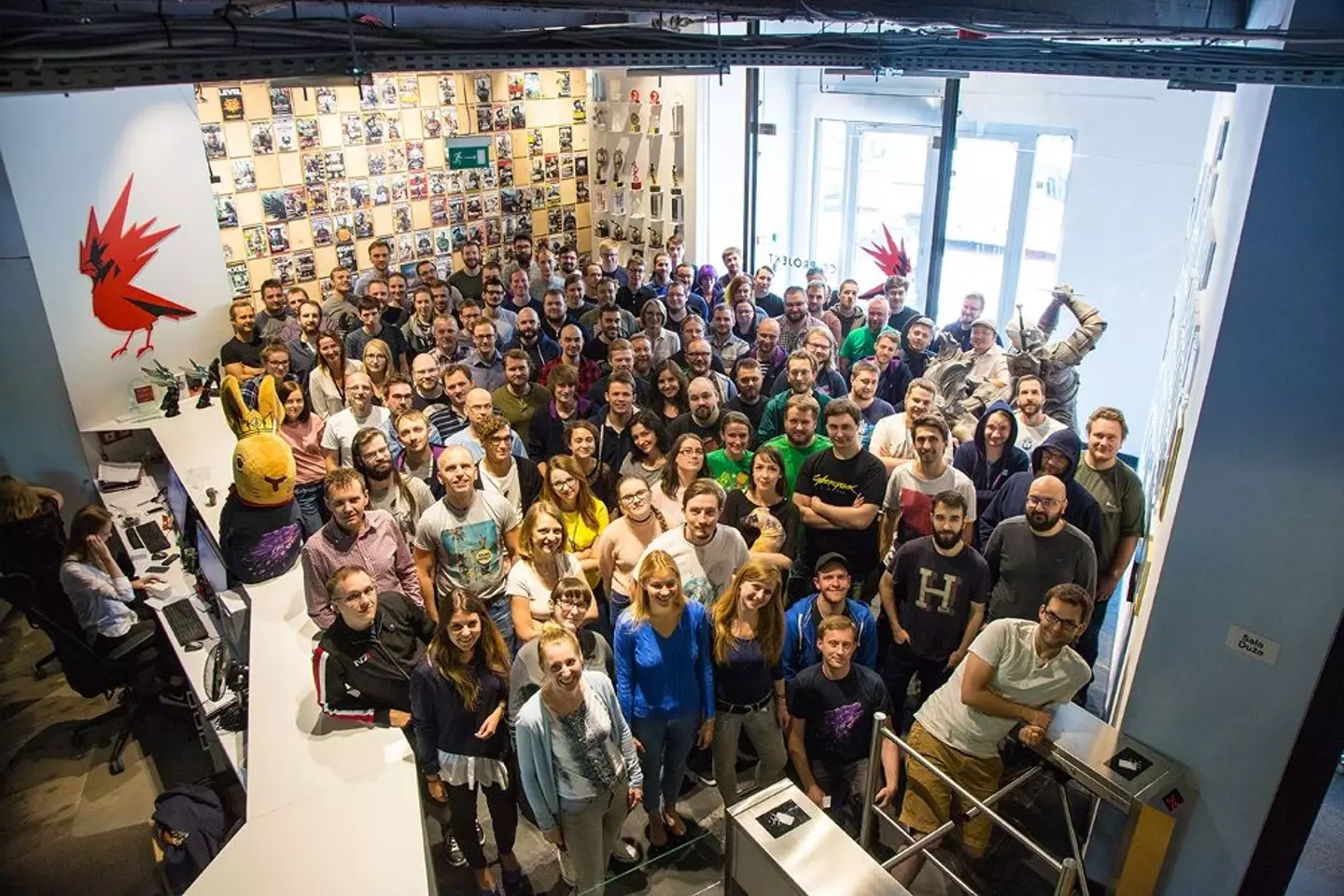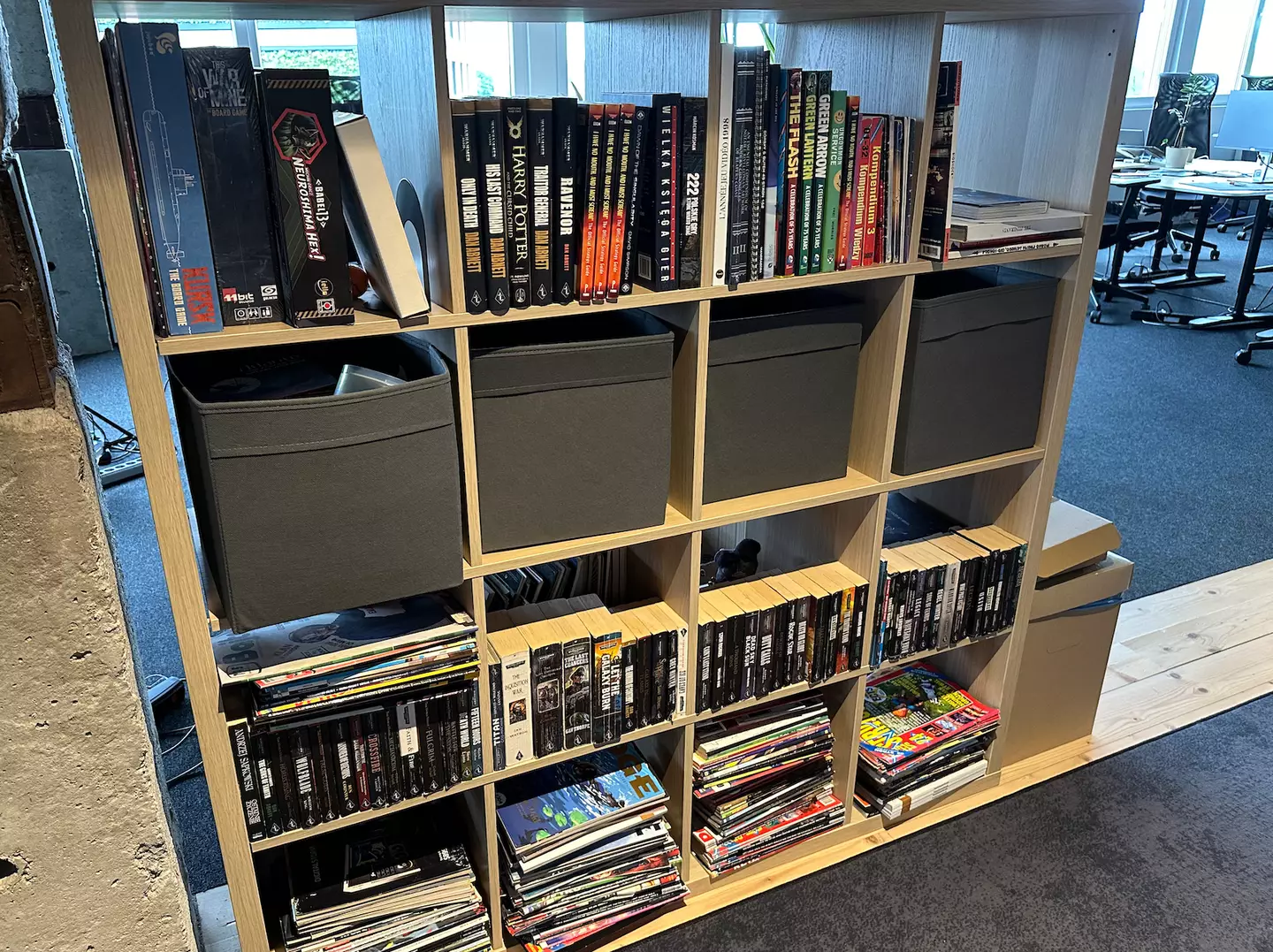
As our Uber pulls into the CD Projekt Red campus in Warsaw, Poland, buildings tower around us. One in particular stands out, with greenery shrouding its walls, providing an ecological build that not only looks prettier than the brick and stone surrounding it, but also, as the plants on its walls grow, will provide oxygen while soaking up carbon dioxide. It’s a fitting place to house GOG when they move from their old office into this new one, because it represents a company that is ensuring a healthy future.
If you’re a PC player, then it’s likely that over the years you’ve built up a little catalogue of games distributed by the company Good Old Games, otherwise known as GOG. Over the years, the company has moved from being an offshoot of CD Projekt Red, to being a presence in the video game industry known for not only bringing retro games to modern systems, but also preserving games that could be potentially lost to time, as relics on older technology, unable to be played.
GOG has become synonymous with the idea of preserving games. Not only that, but making them fully playable on modern systems. The team here often rebuilds the coding of games to implement things like controller support, resolution increases, and even removing bugs and glitches that were present on release. It’s not always smooth sailing, because each game brings with it their own challenges, whether that’s technical, or logistical.
“You can treat games as cultural artifacts, right?” says Marcin Paczyński, a senior business developer at GOG for over a decade. “We want to bring everything that the experience brought to us and made possible,” he continues. This throws up a lot of issues in many instances, one of them technical. How does GOG actually create these retro games, some of which are over 30 years old, and authentically reproduce them for a modern audience?
Advert
“If it’s a game that’s already in our catalogue, those are usually just tweaks that we need to do, like make sure that it works on Windows 10 and 11,” describes Adam Ziółkowski a technical producer for GOG. “The common issues that we are experiencing is that some of the games don't have an FPS lock, so when you actually go beyond 60 FPS, it usually starts doing odd things with physics and stuff.”

Adam details how a lot of older games become very memory hungry when you bring them to modern systems, and this is because they don’t have a large memory awareness. You have to remember, games back in the 1990s were being installed on tiny hard drives, and using miniscule RAM specifications, compared to now, so they could only access a certain amount of memory. What GOG realised is that these games would grab hold of any memory they could, causing no end of issues.
Adam explains further, saying, “The game then starts crashing because it wants to write something in the memory slot that it's actually used by something else.” This also becomes an issue for players as many of them are now booting the game up onto a 4K display, which ramps up memory usage. “The game often falls off the boundaries of what it was designed to do. So because we are adding that [4K] support, we also need to extend the memory that the game is allowed to use.” This extra point comes from Piotr Gnyp, another senior business development member of GOG.
Advert
Ziółkowski jumps in to add that it’s not just memory that proves a problem when bringing games to GOG, it can also be the computer’s CPU. “Games were designed for single core [CPUs],” he notes, and this meant that when a game is opened on a modern multi-core PC, it would try to utilise the main core of the CPU, which is often hoarded by things like your operating system. He goes on to say, “of course, it’s totally different depending on the project. And it changes depending on if we have a source code. If you've got a source code, we're actually blessed.”
However, source codes for these games are often difficult to come by. When games were being developed in the 1990s and early 2000s, nobody really knew the longevity of the hobby, and so weren’t all that precious about retaining source codes once the game was shipped. This means that GOG often has to rely on materials outside the game, like manuals, development notes kept by archivists, and even reports from QA departments within the original developer. Using these materials, they can begin to compile the information needed to modernise the running of each game.

The first step in obtaining a source code is the original developers and publishers of each game, which is where someone like Marcin Paczyński comes in. “It would make our lives a bit easier,” says Marcin, “and 99% of the cases, if you're talking about games that are 10 to 15 or 20 years old, you can forget about it.” So, how does GOG unravel the puzzle of each game, considering they’re all developed at different times, on ever-evolving machinery?
Advert
Marcin continues to explain and says, “We have a team that is specialising in reverse engineering. We have tools that are able to work already. Right now, we can do a lot of things, and make a lot of changes in those games, without having the source code.” Here, I interject and make a case for game preservation to be more important than it currently is, because if these source codes had been kept, recreating the titles for a new audience would be simpler, not easy by any means, but still simpler.
To this, Marcin says, “one of our blind spots currently, that we are working on, is multiplayer. We could bring it back, or even maybe add LAN multiplayer to those games. That would enhance what we are currently doing in the Game Preservation Department, because it keeps the game contained.” Multiplayer isn’t one of those things we think about when it comes to preserving or revitalising older games - once the servers are shut down, the game ceases to exist. “A source code could help with that,” continues Marcin, and GOG would be able to create the infrastructure needed to reimplement the multiplayer experience.
Oftentimes, GOG isn’t just bringing the games back from the dead and simply ushering them out the door with controller support, 4K options, and full-screen functionality. It goes far beyond that. The core principle is to capture the authenticity of each game, no matter how that is accomplished. This usually does mean leaving the games alone beyond the technical upgrades needed to run them on modern machines, but sometimes the team need to tweak further.

Advert
Here, Adam Ziółkowski describes a recent issue the team faced when working on Breath of Fire IV. “The main idea is to keep the original experience. We are not enhancing the games,” he says. However, Breath of Fire IV posed a unique problem. “We are porting the PC version of the game, and the sprites are hard-coded into the game. This caused the sprites to be blurry, which, at the time, was fine, because of resolutions.” However, when players got their hands on the game, they were unhappy with how smeared the visuals looked. “It's easier to scale the 3D model and the texture look nice in higher resolutions,” Adam explains, “but when you render sprites, and they are anti-aliased, something bad happens.”
At the time of release of Breath of Fire IV, the team simply pushed the game out thinking “that was how the PC version was,” but players wanted crisp graphics and the team began to wonder if they could, instead, recreate the PlayStation visuals, which wasn’t anti-aliased. Here, Ziółkowski explains, “one of our guys got very inspired, and over the weekend, he implemented a new function that strips the anti-aliasing, and renders the visuals without, keeping the pixels crisp.” This shows the dedication of the team, and the passion they have for capturing the feeling we had when we first played these games many years ago.
Interestingly, sometimes it’s not the fans that want each release to be tweaked. When it came to bringing Dino Crisis and Resident Evil to GOG, Capcom wanted to treat them like brand-new releases. Adam Ziółkowski explains, saying, “We were going back and forth with them constantly. Usually we do all the testing and stuff like that in house without external involvement. But with Capcom, we were in a constant loop.”

Advert
It’s obvious Capcom were precious about their franchises, and this is something unique for GOG as many of the games they revive are so old that the creators have moved on, or are no longer in the industry. “I think we did 40 iterations of the build,” Adam continues, “and they would replay the game every time and make sure that it's up to their standards.” In many instances, Capcom actually encouraged GOG to fix problems that were present in the original material, ensuring that the original vision for the game was achieved.
He gives an example of a room where the music stopped playing despite the fact that Capcom intended for it to loop, which left players in a weird, uncomfortable silence. This was something they could fix while retaining the legacy details of the game. Something similar happened when the team was working on Silent Hill 4. In certain rooms the player would experience a haunting, and on the original PC version, a few of these were not coded correctly in order to be shown.
“It turned out, after investigation, the cause was one bug in the code. I think it was set to four, so it will only see four rooms to be played. However, there was a total of seven hauntings supposed to be seen,” explains Adam. GOG then tweaked that code, giving players the original, proper version of the game that was supposed to be seen.
The work they do goes beyond just preservation then, but that’s still the core of the company, not just because it’s good business, but because everyone who works there has been an avid fan of games for many years.
Game preservation has become a hot topic in recent years, particularly as games shift to being distributed digitally. The concerns fans have usually centre around ownership, but also on what happens to the games we’ve paid for when developers and publishers can no longer support them. It’s not like the film industry or books, where the original product can be reissued, games have to be constantly adjusted to run on modern systems, bringing them to each generation of console or GPU.

“Game Preservation is crucial to the survival of the gaming industry,” says Piotr Gnyp, who goes on to say, however, “preservation is now a business strategy.” He makes the point of saying that while we’d love for every company to preserve the source code of their games and make them available, it doesn’t make good business sense. Plus, some games are fondly remembered and can be revamped for crucial revenue, as Piotr notes with The Elder Scrolls IV: Oblivion Remastered.
Here, Marcin jumps in, further elaborating on why it’s hard for AAA publishers and developers to preserve everything. He gives the example of the original Fallout, which for many was an important game upon release in 1997, but though that game is important to players who experienced it originally, “you need to have that perspective, and note, what is important from a perspective of a publisher?” He goes on to say, “From a publisher perspective, you can start marketing those games in terms of the nostalgia.”
Of course, it comes down to money, and also investment of time. As Piotr explains, “It is a process that never ends. You need to basically constantly go back to the game.” This is a costly factor, but it’s made more difficult with how quickly games used to move on. “The difference in the graphics department, even in the gameplay department, between a game released in 2015 and 2005 is night and day.” This makes it much harder to stay on top of developments that would allow the game to stay fully playable on each system.
Piotr also touches on the value of games, which nowadays depreciates a lot faster, especially as digital games can be sold for longer than physical copies, needing no retail space. This devalues much older games, making the idea of preserving them, or updating them, unappealing to publishers. “If the game is 10 years old, it probably has absolutely no value or very little, so we need to sell it at 90% off and just throw it out for two bucks, right?” Piotr says of publisher attitudes.
He believes that a new business model needs to be implemented, one that retains the value of older games and stays appealing to consumers. What this solution is, he doesn’t know. Nobody does. Consumer opinion on pricing is a sore topic currently, and one that fluctuates wildly depending on what’s being sold. For some decades old games, the idea of spending $20 feels unfair to some, but then EA releases The Sims Legacy Collection for over $20 and many fans flocked to it.

“I was kind of surprised by that,” adds Marcin on the subject of The Sims re-release. He carries on, “there are a lot of passionate people there that love games, not always, but usually so,” he says this of big publishers. He goes on to say that although he talks to people at publishers who are passionate about putting older games out, there has to be a justification. “This is how corporations work,” he says, “And this is not because they are an evil corporation. It has to make business sense, especially for publicly traded companies.”
Game preservation will always be a sticky subject, but there are companies, and community creators, out there doing their best to ensure that games can work on modern hardware, or get limited runs on physical media, to provide a future for those games or franchises.
Before I leave the GOG offices, Marcin touches on another positive function of their work. He explains how GOG can take a franchise and become a test bed for publishers, seeing whether there is enough discussion to develop a modern instalment. “There are things like that happening right now, but I cannot talk about it,” laughs Marcin, though he does reveal that publishers keep a close eye on how their older games perform on GOG.
“[Publishers] could see the recent comments that people make about these games. They could see if the mechanics are still relevant. They could see how strong the community is. And also talk to them. And then if there's an active, alive community, it's much easier to market [a new game] and sell in an already known franchise.
As I walk through the halls of the GOG offices, the staff are eager to show off the hoards of games, magazines, books, statues, and much more. Boxes are pulled off shelves to reveal old QA documents on random games; sealed boxed copies of Fallout for PC sit at eyeline; cases upon cases of discs, both CD and floppy, can be seen everywhere. Every inch of space is taken up by retro gaming greatness, and everyone I speak to is a genuine enjoyer of games, telling me what they’re playing, and how they got into games in the first place. And so, I left GOG knowing that the future of gaming, and the past, is in safe hands.
Topics: Retro Gaming, CD Projekt Red, Features, Interview
